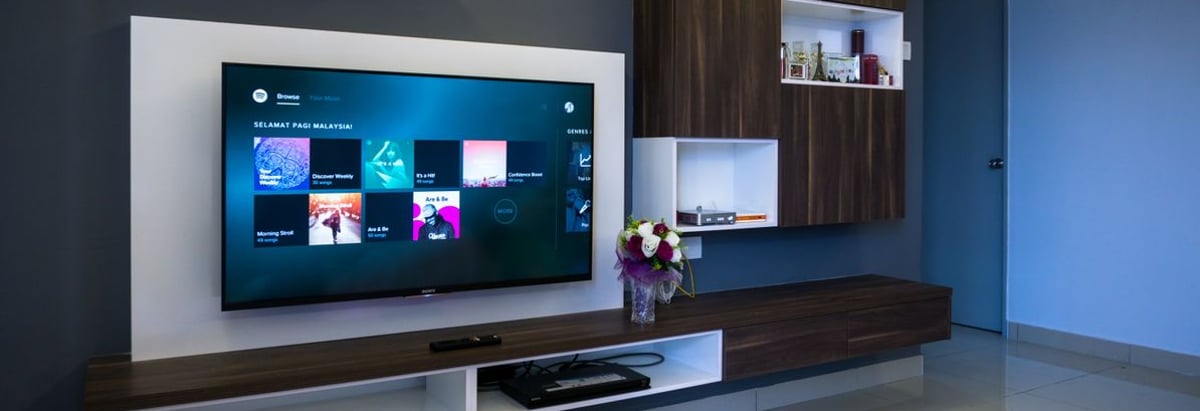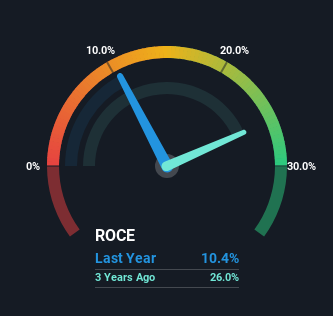- Hong Kong
- /
- Consumer Durables
- /
- SEHK:1747
Capital Allocation Trends At Home Control International (HKG:1747) Aren't Ideal

What are the early trends we should look for to identify a stock that could multiply in value over the long term? Typically, we'll want to notice a trend of growing return on capital employed (ROCE) and alongside that, an expanding base of capital employed. Put simply, these types of businesses are compounding machines, meaning they are continually reinvesting their earnings at ever-higher rates of return. In light of that, when we looked at Home Control International (HKG:1747) and its ROCE trend, we weren't exactly thrilled.
Understanding Return On Capital Employed (ROCE)
If you haven't worked with ROCE before, it measures the 'return' (pre-tax profit) a company generates from capital employed in its business. The formula for this calculation on Home Control International is:
Return on Capital Employed = Earnings Before Interest and Tax (EBIT) ÷ (Total Assets - Current Liabilities)
0.10 = US$3.9m ÷ (US$72m - US$35m) (Based on the trailing twelve months to June 2023).
Thus, Home Control International has an ROCE of 10%. In absolute terms, that's a satisfactory return, but compared to the Consumer Durables industry average of 7.7% it's much better.
View our latest analysis for Home Control International

In the above chart we have measured Home Control International's prior ROCE against its prior performance, but the future is arguably more important. If you'd like to see what analysts are forecasting going forward, you should check out our free report for Home Control International.
How Are Returns Trending?
When we looked at the ROCE trend at Home Control International, we didn't gain much confidence. Over the last five years, returns on capital have decreased to 10% from 32% five years ago. And considering revenue has dropped while employing more capital, we'd be cautious. If this were to continue, you might be looking at a company that is trying to reinvest for growth but is actually losing market share since sales haven't increased.
On a side note, Home Control International has done well to pay down its current liabilities to 48% of total assets. So we could link some of this to the decrease in ROCE. Effectively this means their suppliers or short-term creditors are funding less of the business, which reduces some elements of risk. Since the business is basically funding more of its operations with it's own money, you could argue this has made the business less efficient at generating ROCE. Keep in mind 48% is still pretty high, so those risks are still somewhat prevalent.
Our Take On Home Control International's ROCE
In summary, we're somewhat concerned by Home Control International's diminishing returns on increasing amounts of capital. Long term shareholders who've owned the stock over the last three years have experienced a 31% depreciation in their investment, so it appears the market might not like these trends either. That being the case, unless the underlying trends revert to a more positive trajectory, we'd consider looking elsewhere.
Home Control International does come with some risks though, we found 3 warning signs in our investment analysis, and 2 of those make us uncomfortable...
While Home Control International isn't earning the highest return, check out this free list of companies that are earning high returns on equity with solid balance sheets.
Valuation is complex, but we're here to simplify it.
Discover if Home Control International might be undervalued or overvalued with our detailed analysis, featuring fair value estimates, potential risks, dividends, insider trades, and its financial condition.
Access Free AnalysisHave feedback on this article? Concerned about the content? Get in touch with us directly. Alternatively, email editorial-team (at) simplywallst.com.
This article by Simply Wall St is general in nature. We provide commentary based on historical data and analyst forecasts only using an unbiased methodology and our articles are not intended to be financial advice. It does not constitute a recommendation to buy or sell any stock, and does not take account of your objectives, or your financial situation. We aim to bring you long-term focused analysis driven by fundamental data. Note that our analysis may not factor in the latest price-sensitive company announcements or qualitative material. Simply Wall St has no position in any stocks mentioned.
About SEHK:1747
Home Control International
An investment holding company, provides home control solutions in North America, Europe, Asia, and Latin America.
Flawless balance sheet and good value.
Similar Companies
Market Insights
Community Narratives




